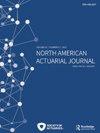How Much Telematics Information Do Insurers Need for Claim Classification?
IF 1.6
Q3 BUSINESS, FINANCE
引用次数: 3
Abstract
It has been shown several times in the literature that telematics data collected in motor insurance help to better understand an insured’s driving risk. Insurers who use these data reap several benefits, such as a better estimate of the pure premium, more segmented pricing, and less adverse selection. The flip side of the coin is that collected telematics information is often sensitive and can therefore compromise policyholders’ privacy. Moreover, due to their large volume, this type of data is costly to store and hard to manipulate. These factors, combined with the fact that insurance regulators tend to issue more and more recommendations regarding the collection and use of telematics data, make it important for an insurer to determine the right amount of telematics information to collect. In addition to traditional contract information such as the age and gender of the insured, we have access to a telematics dataset where information is summarized by trip. We first derive several features of interest from these trip summaries before building a claim classification model using both traditional and telematics features. By comparing a few classification algorithms, we find that logistic regression with lasso penalty is the most suitable for our problem. Using this model, we develop a method to determine how much information about policyholders’ driving should be kept by an insurer. Using real data from a North American insurance company, we find that telematics data become redundant after about 3 months or 4000 km of observation, at least from a claim classification perspective.保险公司需要多少远程通信信息进行索赔分类?
文献中多次表明,在汽车保险中收集的远程信息处理数据有助于更好地了解被保险人的驾驶风险。使用这些数据的保险公司可以获得一些好处,例如更好地估计纯保费、更细分的定价和更少的不利选择。硬币的另一面是,收集的远程信息处理信息往往是敏感的,因此可能会损害投保人的隐私。此外,由于它们的体积大,这类数据的存储成本很高,而且很难操作。这些因素,再加上保险监管机构倾向于就远程信息处理数据的收集和使用发布越来越多的建议,使得保险公司确定要收集的正确数量的远程信息处理信息变得很重要。除了传统的合同信息,如被保险人的年龄和性别,我们还可以访问远程信息处理数据集,其中的信息按行程汇总。在使用传统和远程信息处理功能构建索赔分类模型之前,我们首先从这些行程摘要中得出几个感兴趣的特征。通过比较几种分类算法,我们发现带有套索惩罚的逻辑回归最适合我们的问题。利用这个模型,我们开发了一种方法来确定保险公司应该保留多少关于投保人驾驶的信息。使用北美一家保险公司的真实数据,我们发现远程信息处理数据在大约3个月或4000个月后变得多余 公里的观测,至少从索赔分类的角度来看。
本文章由计算机程序翻译,如有差异,请以英文原文为准。
求助全文
约1分钟内获得全文
求助全文

 求助内容:
求助内容: 应助结果提醒方式:
应助结果提醒方式:


